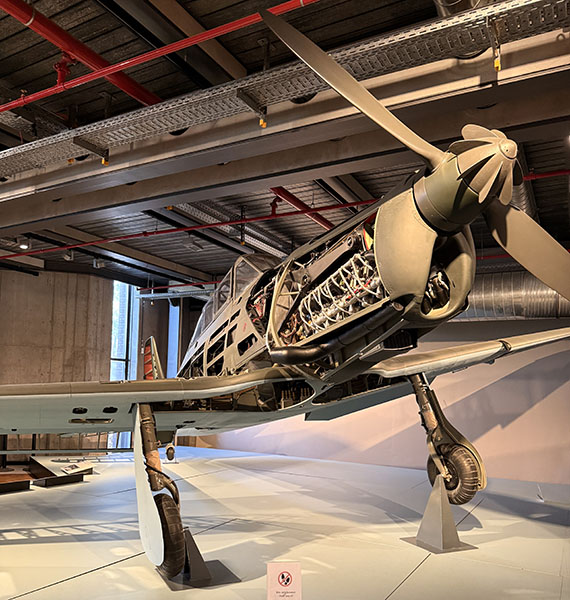GIB Visits the Berlin Technical Museum

Today as a class, we toured and explored the Technical Museum of Berlin. This museum has exhibits with deep histories of computers, trains, airplanes, ships, textiles, and more! We had just learned about the first computer made by “the father of computers” in Germany: Konrad Zuse. We learned that Zuse first built the Z1 computer in 1936; this was a massive feat in the world of computers. I was most looking forward to seeing the Z1 in the museum; learning about this computer really took me back to my time in the course “Computer Organization” with low-level programming languages and the physical orientation of computers.
We had a tour guide with us who was extremely knowledgeable and had many interesting stories to share about how computers got started in Germany, the impacts of World War II on the progression of computers, and the life of the German father of computers. The history of computers fits in so well with the astounding history of Germany- I did not expect that these timelines would line up so well!

I was really interested in learning from our tour guide about how information was stored in the first computer. The photo of the large metal contraption and the roll of film shows just how that happened- the computer would read punched holes in the movie film, and those holes served as storage of program code. The giant Z1 (below, left) is thousands of times larger than our phones, but our phones hold hold millions of times more memory than this machine.


Another part of the computer science part of the Technical Museum of Berlin that I was intrigued by was a book depicting the first programming language, created by Zuse. In comparison to the languages I know and use (Java, Python, C++, etc.) this code is extremely confusing! It seems unfathomable to be going through my Computer Science classes at Gonzaga using this gibberish-like language. The lack of worlds and jumbling of lines is fascinating; I am amazed by Zuse and all that he contributed to computer science as we know it through massive computers and crazy languages.

After parting with our computer-expert tour guide, I ventured to look at the trains and the airplanes. I know far less about these two contraptions, but was astounded by them nonetheless. The trains were beautiful, showing exactly what different models look like and the tracks that they are on. The trains in Germany that we use to go everywhere look nothing like the older trains in the museum, but I have a huge appreciation for the history of trains that led to the wonderful public transport that Germany relies on today.


Seeing the airplanes was amazing as well. There were two floors of airplanes of every style from many different decades, explaining the history of aviation. I do not know anything about planes either, so this was a wonderful way to learn a little bit more. I feel as though I do not see many smaller planes ever, because nowadays the planes that we think of are the large commercial planes that fly us to our vacations (or to Berlin!). However, the Technical Museum focused on the smaller planes and how they came to be, and that was great to see.

I am so grateful to be a part of the field of computer science, hoping to take all of this knowledge and prove that we can keep developing even further while remembering how far we have already come. This trip was so important to this course, as Information Warfare would look incredibly different today if it were not for computers! We need to understand the original goal of these machines before we look at everything that people have used them for. The Technical Museum of Germany was a wonderful trip to take as a group to learn new things about any machinery you can imagine.
